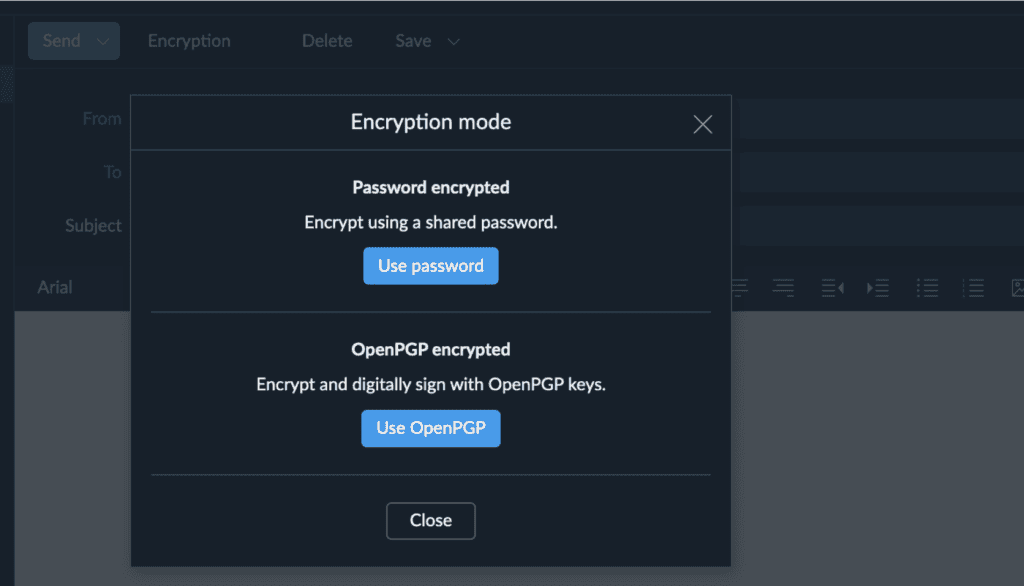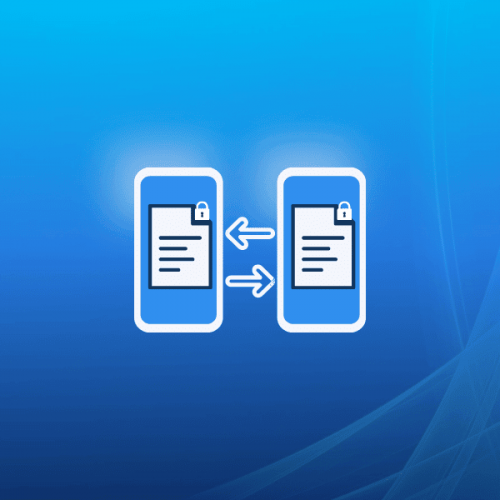Online secure file transfers have become an integral part of our daily lives.
Important documents, photos, or videos… We share stuff over the Internet all the time, every day.
However, convenience comes with risks and tradeoffs. In this article, we’ll cover:
- What a secure file transfer is.
- How it differs from regular file transfers.
- The importance of sharing your files securely over the Internet
- Options and best practices for online secure file transfers.
Let’s explore.
Get the latest privacy news in your inbox
Sign up to the Mailfence Newsletter.
What is an Online File Transfer?
Simply put, an online file transfer is the process of sending files from one location to another via the Internet.
This can involve sharing documents, images, videos, and various other types of files. We do it all the time, even when we are not aware. Sending a picture on a Whatsapp group? That’s an online file transfer. Sending a copy of your ID by email to your partner? That’s also an online file transfer.

Online file transfers have, therefore, become a fundamental aspect of our digital interactions.
Which begs the question: how safe are these documents we send? And what are the risks involved when we don’t send them securely?
Secure File Transfer vs. Regular: What are the Tradeoffs?
Let’s now examine the critical differences between a secure file transfer and a regular one transfer.
Pros and Cons of Regular Online File Transfers
On the one hand, regular file transfers offer the most convenience. They are often quick and easy to set up, making them a convenient option for sharing files informally. What’s more, they don’t require any additional setup. Typically, no special software or encryption methods are required, allowing for straightforward file sharing.
This is why most people use services like Gmail or Facebook in their everyday lives. Security and privacy are traded for convenience.
This also means that regular file transfers lack any encryption or security features. This leaves your data vulnerable to interception and unauthorized access. You also have limited control over who can access the shared files. This can, in turn, lead to privacy concerns and data leakage.

Pros and Cons of Secure Online File Transfers
On the other hand, a secure file transfer uses encryption and authentication to protect your data. This ensures confidentiality and integrity during transit. If you are part of an organization, secure transfers can also help your organization comply with data protection regulations, reducing the risk of legal consequences.
However, you will always trade a bit of convenience when choosing more secure and private options.
Everything comes at a cost, and so does a secure file transfer. In terms of complexity, setting up secure file transfers may require additional steps. These can involve encryption software or secure protocols, which can be more complex than regular transfers. These methods also often come with associated costs, while many regular file transfers are free.
Why Share Files Securely Online?
We touched on it in our previous section. But let’s expand a bit more on why an online secure file transfer is not just good practice but crucial.
Safeguarding Sensitive Data
Data hacks have become more common than ever. Hardly a day goes by that we don’t hear of a new company data breach. And while you can’t control how companies secure your data, you can choose what you share, with whom, and in what manner.
Sensitive data has become a prime target for cybercriminals. Personal information, financial records, confidential business data… It’s all game.
Failing to secure these files during transfer can have disastrous consequences. Secure file transfers ensure that your data remains confidential and protected, reducing the risk of unauthorized access, data leaks, and identity theft.
Identity Theft Prevention
Using secure file sharing reduces the risk of identity theft since your personal information and documents are less vulnerable to interception or data breaches.
Privacy Protection
Secure online file sharing ensures that your personal files remain private. This prevents unauthorized individuals or companies from accessing your personal information.
Legal Consequences
Data protection laws and regulations, such as GDPR and HIPAA, mandate the secure handling of personal information. Failure to comply with these regulations can result in hefty fines and legal penalties. By prioritizing secure file transfers, you not only protect your data but also stay in compliance with the law.
Trust with Clients and Partners
Trust is the cornerstone of successful business relationships. When you share files with clients, partners, or users, they rely on you to protect their information. Secure file transfers demonstrate your commitment to their privacy and security. This trust can lead to stronger partnerships, increased customer loyalty, and positive word-of-mouth referrals.
5 Ways to Share Files Securely Online
Now let’s dive into the meat of this article. What are the best ways to share files securely over the Internet? And what are the tradeoffs?
1. Encrypted Email
Encrypted emails are the most common way to share files securely.
With a secure and private email service such as Mailfence, your data is end-to-end encrypted.
End-to-end encryption (E2EE) ensures that only the intended recipient can decrypt and access the files.

Only the intended recipient who holds the private key can decrypt the message. This protects you from hackers getting your data by eavesdropping on Wi-Fi or other channels. E2EE also offers more security and authenticity. When with digital signatures, an encrypted email proves that the sender is indeed the ‘true’ sender of the message. Finally, E2EE protects your files against mass surveillance.
2. Encrypted Cloud Storage
One key advantage of cloud storage is that files remain accessible at all times. If your partner often needs a copy of your driver’s license, you do not need to send it repeatedly.
Cloud storage services like Dropbox and Google Drive are immensely popular. However, they do not offer adequate security and privacy controls.
Many privacy-oriented companies offer better options. At Mailfence, we offer Mailfence Documents, a more refined, private and secure Google Drive. With Mailfence Documents, we have made it easy to share, store, and collaborate on files. You also have highly customizable access controls that specify who can view and edit your files.
When using cloud storage for file sharing, make sure to choose strong, unique passwords. And enable two-factor authentication (2FA) whenever possible to further enhance security.
3. Secure File-Sharing Messaging Apps
If you need to quickly send a password to someone, a messaging app might be more convenient.
However, you should never, ever use apps such as Facebook Messenger or Whatsapp for this.
The reason is that these kind of apps provide poor privacy and security guarantees. Instead, opt for services such as Signal or Telegram. If you decide for Telegram, make sure to use the “Secret Chats” function so that end-to-end encryption is active. Signal on the other has end-to-end encryption by default.
Although not ideal for sharing big files, these tools are handy for one-off secure file transfers.
4. Password Protection and Encryption Software
When sharing files, especially sensitive ones, consider using password protection and encryption software.
Encryption software is designed to protect the confidentiality of digital information. It does this by converting readable data (plaintext) into an unreadable format (ciphertext).
For this, the program uses a specific algorithm and an encryption key. This process is known as encryption. To read the encrypted data, the recipient must have the appropriate decryption key and the software to reverse the process, known as decryption.

Tools like AxCrypt enable you to compress and encrypt files before sharing them. This extra layer of protection ensures that even if the files are intercepted, they remain unreadable without the correct password. It’s a simple yet effective way to enhance the security of your file transfers, especially when dealing with sensitive documents or archives.
5. Secure Peer-to-Peer File Sharing
In some scenarios, you may need to share files directly between devices.
Platforms like ShareDrop offer secure peer-to-peer file-sharing options. They ensure that files are transferred directly between authorized devices, without uploading to any server. This minimizes the exposure to potential threats on the internet. This approach can be particularly useful for confidential data sharing within closed networks or among trusted contacts.
Last Words on Secure File Transfers
That’s a wrap for this guide on the best methods for secure file transfers. We hope you found it useful, and were able to understand your options better.
Got any questions? Anything unclear? Let us know over at support@mailfence.com
And if you’re ready to step up your Internet privacy, create your free Mailfence account today.



